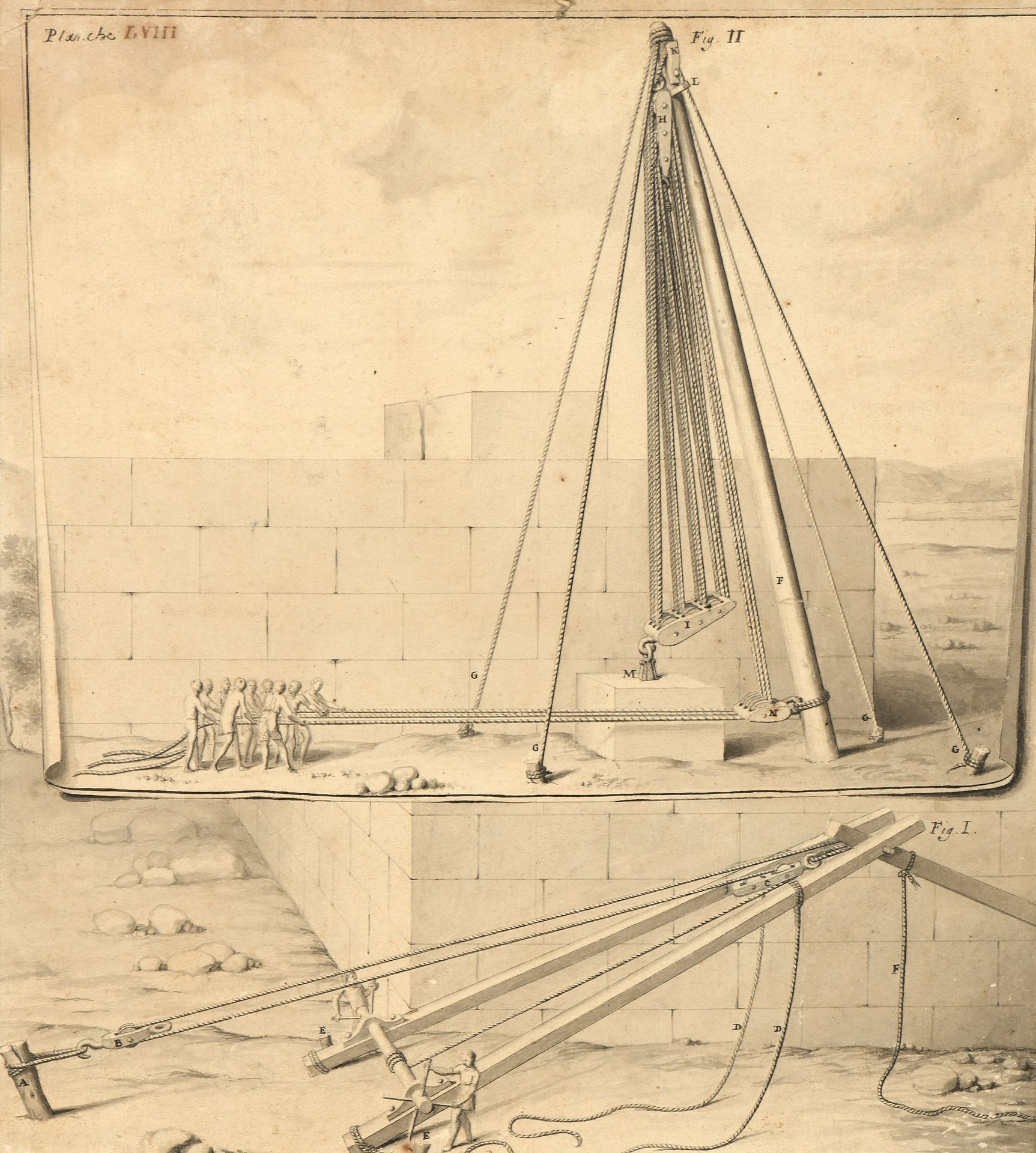Description
Claude PERRAULT (Paris 1613-1688) D'une autre machine semblable à la précédente par le moyen de lequel on peut avec plus de seureté élever des fardeaux d'une grandeur et d'un poids extraordinaire, le moulinet étant changé en tympan, illustration pour les Dix livres d'architecture de Vitruve. Pen and black and gray ink, gray wash. 26 x 23 cm Inscribed lower left with SB.le Clerc. Bears at top left the number Planche LVIII and at top right Fig II. Our drawing is preparatory to the engraving intended to illustrate Le Livre X des Dix Livres d'architecture de Vitruve, Paris, 1673, chapter IV, p. 176, reproduced p. 177, pl. 58). Claude Perrault proposed several French translations of the Roman architect's writings, including the one published in 1673 under the title Dix Livres d'architecture de Vitruve, corrigez et traduits nouvellement en françois avec des notes et des figures. In his notes, he expressed his opposition to the concept of architecture inherited from the Ancients, spearheaded by his master François Blondel, and sided with the Moderns. Claude Perrault is best known as the architect of the great colonnade at the Louvre, but also as a theorist whose writings were disseminated throughout Europe. In particular, he designed the Observatory and the Grotte de Thétis at Versailles. He was also a physician, leaving important works in the field of anatomy.
4
Claude PERRAULT (Paris 1613-1688) D'une autre machine semblable à la précédente par le moyen de lequel on peut avec plus de seureté élever des fardeaux d'une grandeur et d'un poids extraordinaire, le moulinet étant changé en tympan, illustration pour les Dix livres d'architecture de Vitruve. Pen and black and gray ink, gray wash. 26 x 23 cm Inscribed lower left with SB.le Clerc. Bears at top left the number Planche LVIII and at top right Fig II. Our drawing is preparatory to the engraving intended to illustrate Le Livre X des Dix Livres d'architecture de Vitruve, Paris, 1673, chapter IV, p. 176, reproduced p. 177, pl. 58). Claude Perrault proposed several French translations of the Roman architect's writings, including the one published in 1673 under the title Dix Livres d'architecture de Vitruve, corrigez et traduits nouvellement en françois avec des notes et des figures. In his notes, he expressed his opposition to the concept of architecture inherited from the Ancients, spearheaded by his master François Blondel, and sided with the Moderns. Claude Perrault is best known as the architect of the great colonnade at the Louvre, but also as a theorist whose writings were disseminated throughout Europe. In particular, he designed the Observatory and the Grotte de Thétis at Versailles. He was also a physician, leaving important works in the field of anatomy.
